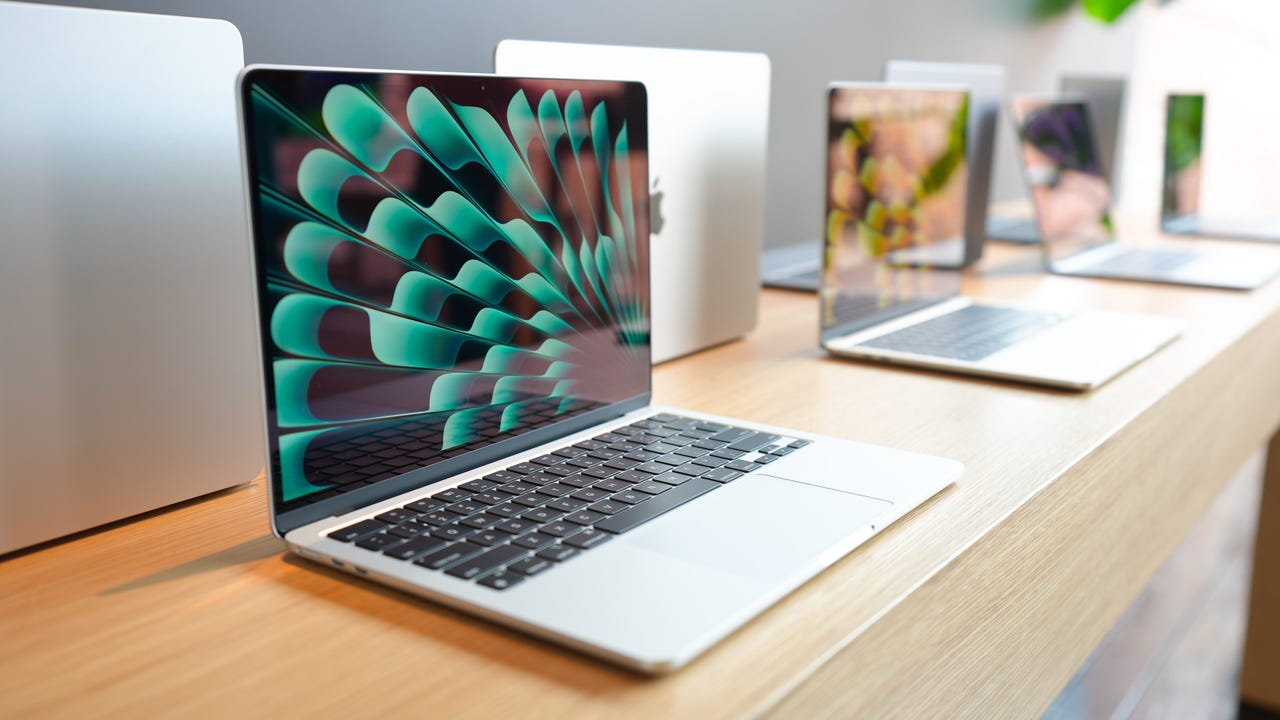
Apple today took the wraps off of its newest MacBooks, a duet of Air models in 13- and 15-inch sizes that come equipped with the company’s latest M3 processor.
Also: Apple launches 13- and 15-inch MacBook Air with M3 chip. Here’s what’s new
Based on ZDNET’s previous testing of Apple’s redesigned MacBook Air laptops and the M3 chip in last year’s Pro line, the latest release should be a recipe for success in almost every way — from performance to battery life to AI use cases.
That’s right. Apple said the “A” word, and it’s not being shy about it, as my afternoon demo of the units can attest to. Here are my big three takeaways after spending an hour with the newly-released MacBook Air.
1. Apple is officially in the AI PC race
From demos of AI applications within Blender, Microsoft 365, and FreeChat, to how the M3-equipped MacBook Air — with a more efficient 16-core Neural Engine (along with accelerators in the GPU/CPU for improved on-device machine learning) — can run various AI models, Apple is making it clear that you don’t have to go “Pro” to operate in today’s AI-driven world.
Also: MacBook Pro vs MacBook Air: How to decide which Apple laptop model to buy
Developing apps on Swift, running large language models, and recording, translating, and transcribing conversations in a medical setting are all instances where the cheaper, fan-less M3 MacBook Air can deliver more than ever before. And the ultraportable nature of the model makes it preferable for students, developers, and users who need to stay mobile.
Apple also wants you to know that it’s been in the AI PC race since the very beginning, with just about every Mac model now carrying neural engines for machine learning. The new MacBook Air is “the best consumer laptop for AI,” the company touts in its Monday press release, but we’ll have to see for ourselves when we put the 13- and 15-inch models through the wringer soon.
2. I can finally recommend the Midnight color
AI aside, there is one subtle design change to the new MacBooks that I really dig, and, no, they’re not any lighter than they already are, nor do they finally have more ports. The Midnight color for the M3 MacBooks now features a “breakthrough anodization seal” that reduces fingerprints — in theory, at least.
Considering how easy it was to get smudges and marks on the original Midnight color of the MacBook Air — which made lighter hue options look like rockstars — this is a welcome change. Having fumbled with the MacBooks for a quick 10-minute photo-op, the fingerprints were noticeable, though not as bad as I remembered on the M2 Air. For me, this makes the Midnight variant recommendable again.
3. Dual-monitor support is a bigger deal than it seems
Lastly, dual monitor support on the MacBook Air shouldn’t be a big deal, but it is. It has less to do with the fact that the MacBook Air can connect to two Studio Displays at the same time and more to do with how it’s done. For the first time, a regular M-series laptop can extend to two monitors while the lid is closed. Previously, that was limited to models with M Pro, Max, and Ultra processors. In person, this setup looks as clean and minimal as you’d expect, especially if you’re on the 13-inch Air.
All in all, the changes to the newest line of MacBook Air feel subtle on paper but may turn out to be very significant. If you’re currently using an M2 MacBook Air, unless your workflow relies heavily on AI applications, I’d say you can settle with what you have for a while longer. If you’re on an M1 or Intel-based MacBook, the bump in performance, efficiency, and screen size (if you consider the 15-inch model) will make the new M3 model a worthy upgrade.




















